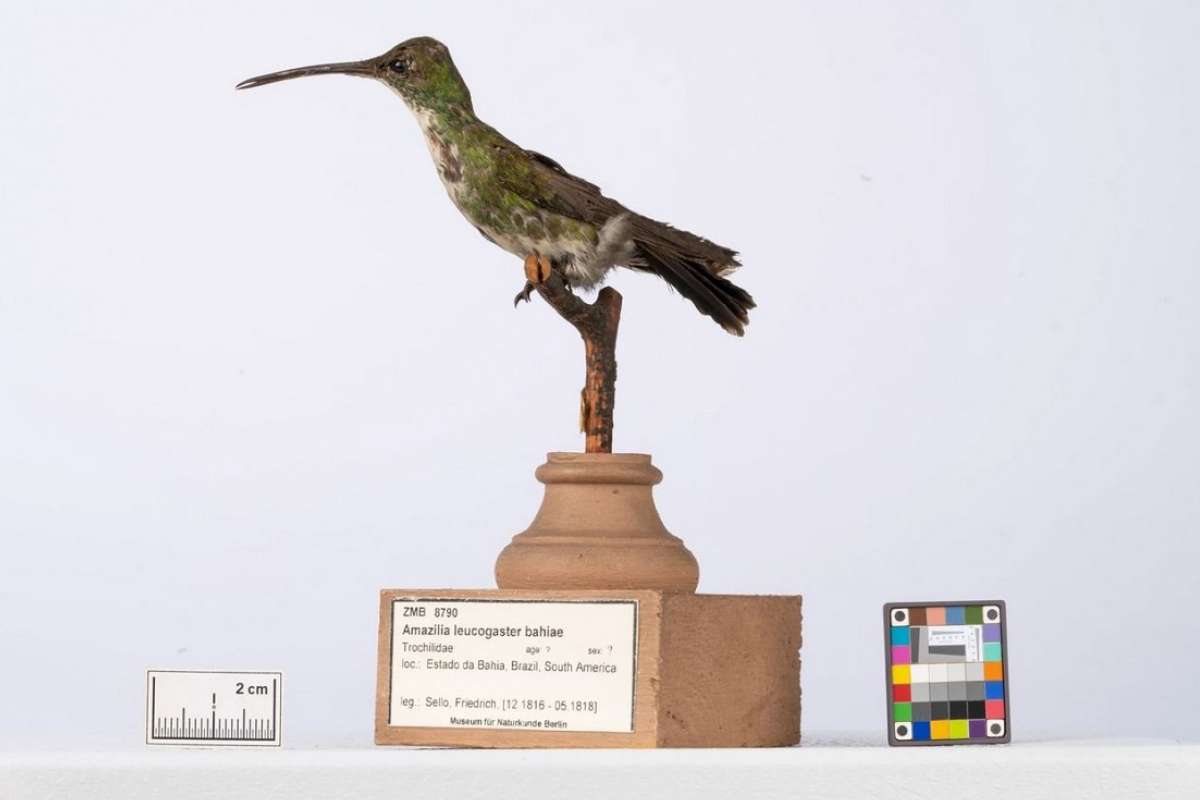The scientific bird collection at the Museum für Naturkunde Berlin is the largest of its kind in Germany with well over 200,000 objects. Because of its richness in species, more than 5,000 type specimens, objects from important collectors and many unique historical specimens, it can be considered as one of the most significant bird collections worldwide.
Depending on the bird systematics, the species spectrum covers between 76% and almost 90% of the world's recent bird species. Geographical emphasis of the collection is on the ornithological world of Brandenburg, South American and colonial collections (Africa, Southeast Asia, New Guinea) as well as further extensive Asian collections.
Approximately 120,000 specimens – a majority of the birds in the collection – are prepared as scientific study skins. This form of taxidermy includes the skin of a bird with plumage, beak, legs, and feet. However, in addition to skeletons, eggs, alcohol preparations, nests and wings, there are also approximately 12,000 mounted bird specimens, which are among the oldest in the collection and were mostly collected in the 19th century. They have spent up to 200 years here in the museum and were heavily damaged especially during World War II. All mounted specimens are already digitally recorded in the collection database with their associated collection data (place and date of discovery, collector, etc.). In addition, these specimens are now also being systematically cleaned, repaired and photographed as part of the Future Plan in the course of collection development and in preparation for the move from the historic bird hall.
A selection of photos of these mounted specimens, each from two perspectives, is made available to the public for the first time in the data portal under a free license (CC0). Among them are birds from the well-known families of pigeons (Columbidae), parrots (Psittacidae) and pheasants (Phasianidae) as well as gull relatives (Laridae), duck birds (Anatidae) and even exotic hummingbirds (Trochilidae). Some rare specimens such as the quetzal (Pharomachrus mocinno) and the kākāpō (Strigops habroptila) are also available online in this dataset.
Anyone who has already taken a look at the recently published book Vogelwelten will recognize many fascinating faces in the data portal, for example a historic Southern cassowary from 1909 from the Berlin Zoo. The book by Klaus Nigge, Karl Schulze-Hagen and Jürgen Fiebig, who was a zoological taxidermist at the Museum für Naturkunde Berlin for more than 50 years, is devoted to five major ornithological collections in Germany and Austria. The picture book is like an expedition, also to our museum, which is now giving digital access to its historical bird collection for the first time through our data portal.
